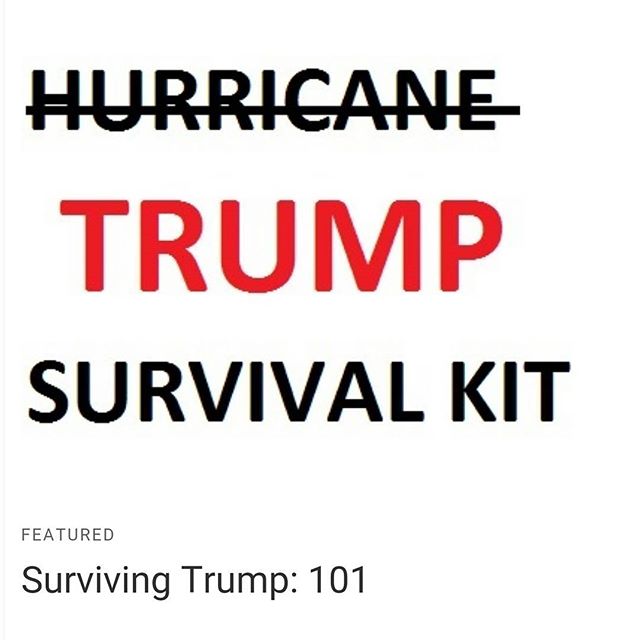Surviving Hurricane Donald
by Kit O’Connell, KitOConnell, 10 February 2017. Resilient
communities are more resistant.

Strong
communities survive and strong communities resist.
In the aftermath of Hurricane Katrina, radical activists and community organizers
created Common Ground Relief to step in where the government and traditional
NGOs like the Red Cross failed. They organized both the immediate needs of the
community, like food and rebuilding, while also enabling long term political
organizing. Today, the Common Ground
Health Clinic still remains in New Orleans, offering
“solidarity not charity.”
Occupy Sandy was a more recent, well known response to disaster. With their
skills honed by Occupy Wall Street, activists created an ambitious network of
neighborhood relief centers offering supplies of all kinds and connecting
people with builders and other volunteers after Hurricane Sandy.
I was a key organizer a similar, smaller effort, Austin Common Ground Relief,
which responded to a deadly flood by helping people in one of the poorest areas
not just to eat and rebuild, but to create a neighborhood association capable
of advocating for their own needs.
Under Donald Trump, we face a new state of emergency, or something like a
continuous, rolling series of disasters. With his plans to gut the EPA and
invest heavily in the most toxic forms of fossil fuels, we can expect new
and more severe natural disasters.
Simultaneously, Hurricane Donald threatens our schools, our health care and so
many of our civil liberties, not to mention our very continued existence as he
sits atop the world’s largest military.
These are terrifying times, and the idea of responding to so many disasters at
once feels impossible. To me, the only hope lies in hyper-local organizing, and
then building coalitions from there.
Let’s organize not only our neighborhoods, but also within digital cultures and
subcultures and across extended social networks that link us by interest,
desire, orientation or outlook across geographic distance.
The idea of creating radical replacements for everything, from abortion clinics
to schools, is daunting, to say the least. However, if we each put in the work,
in our own way, with each of our skills, I believe we can build new networks of
survival and create resilient communities.
When sociologist Erik Klinenberg studied the deadly 1995 Chicago heat wave, he
found that well-connected neighborhoods, where people knew each other, checked
on each other, and were better ready to respond to each others’ needs, were
more resilient.
It’s my contention that well-connected communities will also be more resilient
against this growing fascist emergency. That means both our physical
neighborhoods, but also the other, less tangible networks, like our social
media buddies or the comrades and family of the heart we cultivate around us.
This isn’t work we do instead of taking the streets, or other forms of
direct action. This is what we do in between marches and strikes. The work of
local and community organizing will also support us during bigger moments of
protest and rupture, when we’ll have newly strengthened networks to support
revolutionary change.
From these connections comes the potential for real long-term movement
building, and even hope for a better future.
|
|


